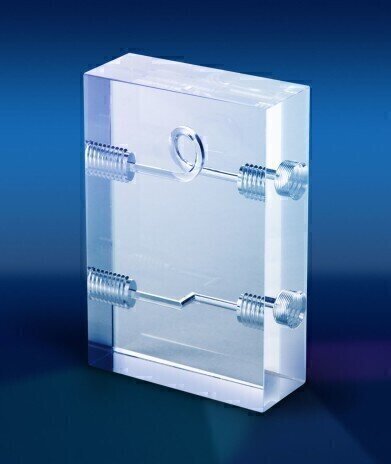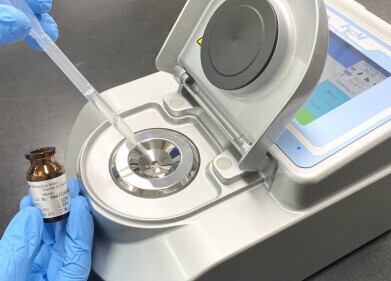Laboratory Products
Idex Health & Science Optimises Fluidic Efficiency with Revolutionary Manifold Innovation
Sep 18 2012
By resolving the toughest challenge to the lifetime of a fluidic manifold—deposits that crystallise in sharp corners and clog the flow path— the patent-pending Eastern Plastics’ Spiral Transition™ improves flow characteristics in manifolds by eliminating sharp turns. Frank Molgano, Idex Health & Science Director of New Product Development for Eastern Plastic products described the new technology, “We can move fluid through a Spiral Transition more efficiently than through a sharp 90 degree turn. Fluids lose energy at a hard corner because of turbulence generated by the change in direction. We can see this in our analytics using CFD (computational fluid dynamics) on the Spiral and on standard 90 degree transitions.
For more than 50 years, Eastern Plastics’ manifolds and components have been used to distribute fluids in diagnostic and life science instruments. Until development of Spiral Transition, manufacturing requirements dictated that changes in direction along the flow path within a manifold were limited to sharp turns. This geometry disrupts laminar flow, causing turbulence and areas of low-velocity flow where deposits can collect. In comparison, Spiral Transition promotes a fully swept, laminar flow path at a more consistent speed and pressure.
Chad Collins, Idex Health & Science General Manager for Eastern Plastic products commented, “All those performance benefits add up to increased reliability of the flow path, and ultimately, uptime of the instrument. Some companies might have hesitated to adopt manifold technology because of concern over clogs—it’s the same concern with any component along a flow path. Reducing the opportunity for crystals to form and improving flow efficiency makes the manifold less susceptible to clogs and more reliable. Or, if some buildup does occur following a period of downtime or inadequate wash protocols—the sweeping design of the spiral makes it easy to clear with fishing line during periodic maintenance.”
“One customer is considering a Spiral Transition manifold to reduce pressure spikes during pump startup. Reducing restrictions created by sharp turns minimises fluid disturbances and achieves more uniform pressure conditions,” Molgano added.
Currently the Eastern Plastics team designs Spiral Transition into their multi-layered, diffusion-bonded manifolds, predominantly in acrylic and Ultem®. As the technology advances, moving into the single-layered manifolds, the team anticipates that most engineered plastics can be utilised. Molgano explained some of the design considerations involved, “How does an instrument designer chose among discreet components or a simple manifold versus more-complex manifolds? What goes into that decision? Often, many factors; it could be size, it could be saving the cost of very expensive reagents, the need for a space-efficient footprint, possibly some thermal characteristics, it may be for specific flow performance. Some designers want a complete modular unit to pop into the system. Customers familiar with our manifolds exhibit a lot of interest in Spiral Transition because it improves the performance of the fluidics in the instrument. Simple as that.”
Digital Edition
Lab Asia 31.2 April 2024
April 2024
In This Edition Chromatography Articles - Approaches to troubleshooting an SPE method for the analysis of oligonucleotides (pt i) - High-precision liquid flow processes demand full fluidic c...
View all digital editions
Events
Apr 28 2024 Montreal, Quebec, Canada
May 05 2024 Seville, Spain
InformEx Zone at CPhl North America
May 07 2024 Pennsylvania, PA, USA
May 14 2024 Oklahoma City, OK, USA
May 15 2024 Birmingham, UK






.jpg)











